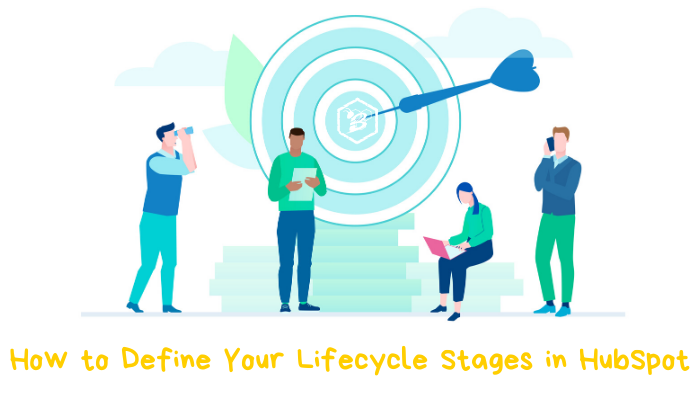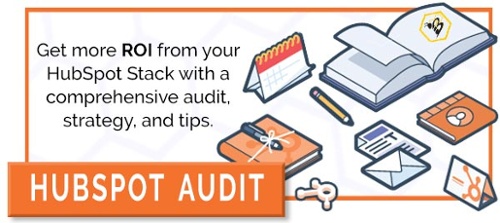If you rely on HubSpot for marketing automation or customer relationship management, lifecycle stages are an essential component of the platform. The problem is that they can be really confusing to understand since the concept of each stage is open to interpretation and adaptation, but HubSpot’s current format makes the lifecycle stage implementation pretty rigid and automatic. Developing a clear understanding of the purpose of each stage and how they can work most effectively to motivate leads to become customers will help your sales and marketing teams avoid the need for workarounds in the future.
What are the Lifecycle Stages?
Lifecycle stages represent how far a contact has moved through the buyer’s journey. The stages are intended to help your business keep track of how leads are moving through the funnel and how to motivate them to take the next steps. There are eight stages in HubSpot and their titles cannot be edited, meaning that the default stage for a new contact is created based on the way custom lifecycle stage properties are created. Many companies can have different internal names for these stages (or don’t even use every lifecycle stage), further complicating the process of moving people through the funnel. It’s important for your sales and marketing teams to be in alignment with the definitions of each step to avoid confusion or lost leads.
But what does each stage entail and what do they mean for your business?
Subscriber
Subscribers are the people who have poked around your page and shown enough interest to take an action like filling out a form to sign up for your newsletter or get new blog notifications. Since this is the very top of the funnel, the majority of the people in this stage are just interested in your content and aren’t likely to become actual customers. Think of this lifecycle stage as the point in which you’re able to create really strong content that serves an educational purpose and presents enough value to pique the interest of people who might want more of what you have to offer in the future.
Lead
Leads are different from subscribers because they have shown more interest in your products or services by signing up for content offers like guides and ebooks, but they might not be sales-ready yet. This can be a question of their budget size or if they would be a good fit for you as a customer. People tend to stay in the lead category for a while before they are either disqualified or they take an action that moves them further along the funnel.
Marketing Qualified Lead
To become a marketing qualified lead, a person has shown serious interest in your business by requesting a demo or a quote and your marketing team has determined that they are ready for a follow-up from the sales team. This is where things can get a little tricky, however. It’s important for your sales team and your marketing team to have a unified idea of what ‘marketing qualified’ means to avoid confusion later in the lifecycle stages. Some businesses use lead scoring to determine status qualification, based on a variety of considerations since filling out a bottom of the funnel form doesn’t always mean the person is ready to have a chat with sales.
Sales Qualified Lead
This is another gray area that can create confusion between sales teams and marketing teams. In some cases, the contact might become sales qualified after a salesperson has reviewed the lead information that’s been captured in your CRM and decided to move forward. For other businesses, this transition might happen because the action they took (requesting a demo, for example), was designed to put them directly in contact with your sales team. Regardless of how contacts get there, businesses will want to try to move people from a marketing qualified lead to a sales qualified lead as quickly as possible. HubSpot makes this process easy with email templates and sequences to quickly set up meetings and avoid losing the interest of a lead.
Opportunity
Once someone moves to the opportunity stage of the lifecycle, you can be sure that they have a clear idea of your company’s products or services, how much those products and services will cost, and a tentative timeline for them to make a decision. It’s more probable now that this person will become an actual customer. The goal in the opportunity stage is to nurture the relationship in the hopes that they will take the next step to purchase something from your business.
Customer
This one is pretty self-explanatory. You were able to beat out the competition with more appealing products, services, or prices to gain the trust of a lead and convert them into a customer! However, this isn’t the end of the line. You will still want to ensure that you provide exceptional quality work to gain a repeat customer in the case of extended services or a champion of your business in the case of one-time services.
Evangelist
Evangelists are your biggest advocates and they’re also a great way to generate more leads. Word of mouth is an incredibly powerful marketing tool. In fact, an article by Forbes stated that 92% of customers believe recommendations from friends and family over all forms of advertising. It’s important for your teams to leverage these connections and create as many leads as possible.
Other
This is the catch-all category for people who don’t necessarily fit anywhere else in the lifecycle stages. You can further define this as a second custom field to account for vendors, influencers, media contacts, and more.
Make HubSpot Lifecycle Stages Work for Your Business
You can simplify the process of establishing internal interpretations of lifecycle stages by asking both teams a few defining questions about each stage. This can include things like:
- Who are these contacts and what problem have they encountered?
- What actions or steps would someone in this stage take?
- What sets this stage apart from the next stage?
- What is the goal of this stage?
Creating and maintaining clear criteria for each stage that is communicated across all departments is the easiest way to make sure your business is using HubSpot lifecycles to its fullest potential. More upfront clarity will allow for more efficient workflow triggers, suppressions, and nurturing sequences, leading to better leads and more customers.
Do you want to use HubSpot to its fullest potential through the creation of crystal-clear lifecycle stage definitions? Our team can offer recommendations for better efficiency and set up both your sales and marketing teams for success with a quick HubSpot audit!




.png?width=100&height=100&name=Why%20Were%20Not%20a%20Marketing%20Agency%20(And%20What%20That%20Means%20for%20Your%20Growth).png)
